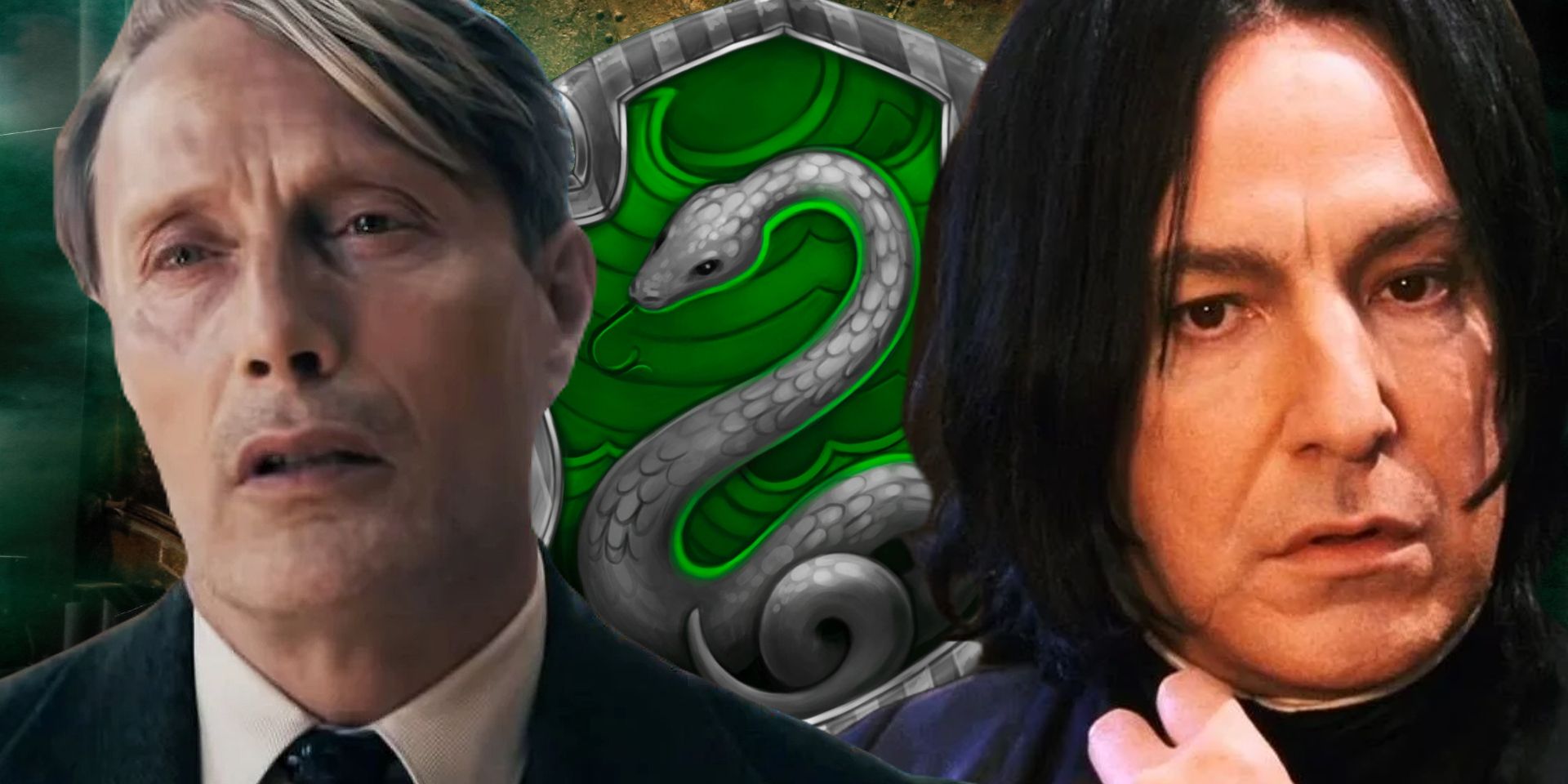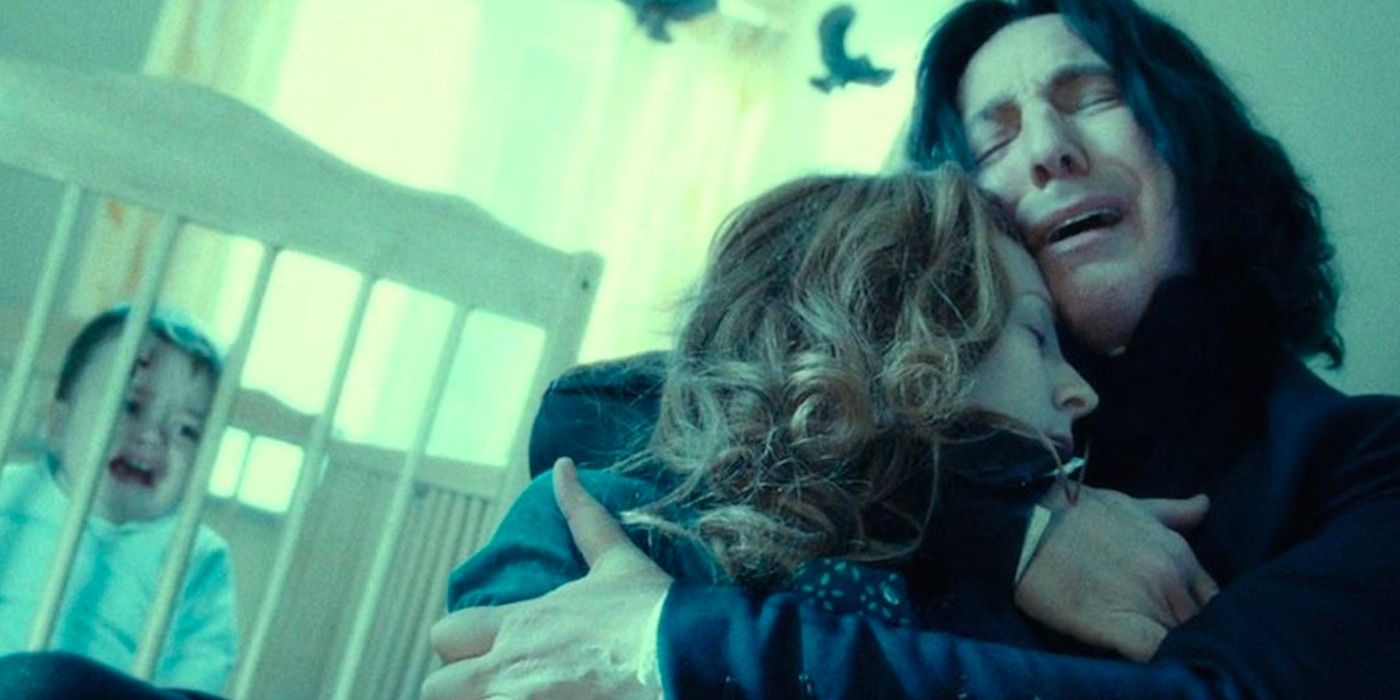Secrets Of Dumbledore Repeats Harry Potter’s Slytherin Slur Despite Snape

Warning: Contains Spoilers For Fantastic Beasts: The Secrets of Dumbledore!
Slytherin house is misrepresented in Fantastic Beasts: The Secrets of Dumbledore, thanks to a short scene involving Jacob Kowalski (Dan Fogler) at Hogwarts. Separating it from Gryffindor, Hufflepuff, and Ravenclaw, writers Steve Kloves and JK Rowling repeat a classic misconception about the house. Moreover, this short scene undoes the lesson taught by Severus Snape at the end of Harry Potter and the Deathly Hallows Part 2.
Regrouping at Hogwarts School of Witchcraft and Wizardry, Jacob Kowalski, Newt Scamander (Eddie Redmayne), Lally Hicks (Jessica Williams), and Theseus Scamander (Callum Turner) consult Albus Dumbledore (Jude Law) on their next move to confuse and take down Gellert Grindelwald (Mads Mikkelsen). During their stay at Hogwarts, Kowalski meets a pleasant group of Ravenclaw students, showing off the wand he was given by Dumbledore. As he meets up with Newt and Theseus, Jacob remarks how the kind Slytherin students gave him some sweets, only for them to be revealed as cockroach clusters, with the Slytherin table laughing at Jacob's expense.
By leaning into the stereotype that all Slytherin wizards and witches are evil (or at least, not very nice), Fantastic Beasts: The Secrets of Dumbledore undoes the impact of Severus Snape proving that this is not true in Harry Potter and the Deathly Hallows Part 2. Snape's sacrifice and deep love for Lily Potter proves that Hogwarts houses are arbitrary and do not reflect a person's entire identity. Reverting back to positioning the Slytherin kids as bullies in the Fantastic Beasts series undoes this good work, by suggesting that all students in this house have a tendency towards evil, no matter what time period they are from.

Even Harry Potter himself reflects that a Hogwarts house doesn't define a person. When he reassures his son, Albus Severus Potter, at the end of The Deathly Hallows Part 2, he tells him that he was named after "two Headmasters of Hogwarts. One of them was a Slytherin and he was probably the bravest man I ever knew". Had Rowling and Kloves made the mean pranksters come from Gryffindor, Hufflepuff, or Ravenclaw, rather than leaning into the Slytherin stereotype, this balanced view of good and evil in the Harry Potter series could have been maintained.
Students from Slytherin house are consistently positioned as antagonists in the series, such as Tom Riddle/Voldemort, Draco Malfoy, and Crabbe and Goyle. The Fantastic Beasts series' antagonist, Grindelwald, is not a Slytherin, as he did not attend Hogwarts, instead attending Durmstrang Institute. However, many viewers believe that with Grindelwald's obsession with pure-blood wizards and hatred of muggles, reflecting a common belief among Slytherins like the Malfoys and Voldemort, he would have been sorted into the snake-filled house. By maintaining the tired stereotype that all Slytherin students are inherently bad, Fantastic Beasts: The Secrets of Dumbledore regresses the series, undoing the excellent character development of Severus Snape, one of the franchise's most beloved characters.
from ScreenRant - Feed https://ift.tt/ljymdOo
via Whole story

Post a Comment